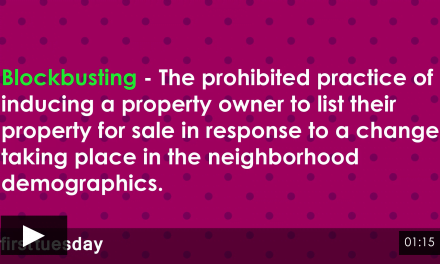Nearly 38,000 homes closed escrow in California during April 2014. This is up 15% from the prior month, but more significantly, down 3% from one year earlier when 39,000 sales took place. However, this is an improvement from March 2014, when home sales volume was down 13% from the prior year.
April’s year-over-year decrease continues the downward trend experienced in home sales volume throughout the second half of 2013 and thus far in 2014. At this time last year, home sales volume was still high, riding the wave of low interest rates. However, increases in both home prices and mortgage interest rates stifled upward movement in sales volume by year’s end.
2013 ended with 446,419 home sales, roughly level with the 449,059 home sales in 2012. Home sales volume remained 40% below the peak year of 2005 when 753,876 sales closed escrow. Prior to the Millennium Boom, 550,000-600,000 homes closed escrow annually.
first tuesday forecasts a slightly weaker home sales volume for 2014 than experienced in 2013. This resembles the 2010-2011 experience in home sales volume after the 2009 tax stimulus. 2012-2013 received a similar “stimulus” from speculators who propped up sales volume and prices. Now, as they continue to exit the market in 2014, sales volume will decrease and prices will slip. This is not due to a lack of demand from end users. However, end users of property have been pushed out of the market by reduced purchasing power, due to the year-long jump in prices and the rise in mortgage rates which took place in mid-2013 and persists today.
The bumpy recovery continues, and it’s still a bumpy ride. California’s housing market needs about 60,000 homes sold monthly to fully recover. That recovery is dependent on 18-24 months of annual California job growth exceeding 350,000-400,000 jobs. The good news is that a full jobs recovery is closer, likely to arrive by 2015.
Other key factors controlling California’s housing market sales volume follow.
Absentee homebuyers: to hold or to fold?
Absentee homebuyers (speculators, buy-to-let investors and renovation contractors) still make up a significant portion of the resale market. Absentee homebuyers accounted for 26% of Southern California (SoCal) April sales volume, down slightly from the prior month and down from 31% one year earlier. The percentage of homes sold in SoCal as flips also decreased to 4.8% in April from 5.3% in the prior month and 6% a year earlier.
Absentee homebuyers made up 20% of Bay Area homebuyers in April, down from 21% in March and down from 24% one year earlier.
Speculators chase upward price movement, but home prices have topped out and will begin to slip mid-year. Real estate speculation is expected to continue its descent throughout this year. Thus, expect absentee buyers to comprise a smaller percentage of monthly sales further into 2014.
Cash purchases (two-thirds of which are made by speculators) remained abnormally high in April, representing 27% of SoCal sales volume, down from 30% in the month before. This follows a steady descent from 34% a year ago. In a normal market, cash purchases represent around 17% of all buyers, comprised mainly of cash-flush end users.
The percentage of sales attributed to cash purchasers will trend downward well into 2014, as speculators abstain in reaction to slipping prices.
Bay Area cash sales were 23% of home sales in April 2014. This is down from 25% in March and 28% one year earlier.
Speculators remain motivated to buy only so long as they believe home prices will rise quickly. Expectations of a quick resale have faced the headwinds of falling sales volume since November 2012. The numbers indicate reality has begun to set in. Expect a speculator mass exodus when prices follow sales volume and take a sympathetic nosedive later this year.
The annual increases in the buyer purchasing power index (BPPI) came to an end in mid-2013, dimming the prospects of flipping for a profit. Higher mortgage rates indicate homebuyers are unable to qualify for as much principal as a year ago. Sellers ignore these trends at their peril.
When speculators realize they cannot make a short-term profit as anticipated, they will either quickly leave the market or resort to Plan B to hold for another five years. The inventory they dump (today’s shadow inventory) will need to be consumed primarily by end users and income property investors. However, there aren’t enough of these buyers ready and willing to sustain even the current low sales volume. Thus, expect prices to remain level to down through 2014.
At the moment, end user demand is half of what is needed for a normal 60,000 monthly sales volume.
Jumbo loans: room at the top
Jumbo loans (loans over $417,000) accounted for 29% of SoCal’s April 2014 sales. This is down slightly from March, which experienced the highest share of jumbos since 2007 when jumbos peaked at 37% of all SoCal loans. March’s jumbo share is up from 26% a year earlier.
Jumbos financed a whopping 56% of Bay Area sales, also the highest since 2007 when it was 59%. This is up from the 53% in March and up from 48% a year earlier.
Jumbo use has risen statewide as sales of high-tier properties accelerated in 2013 — particularly in the pricey Bay Area with its greater concentration of new wealth. Despite this increase, jumbo use remains below its peak in 2006-2007 when buyer overreaching maxed out.
FHA-insured loans: a window is closing
Federal Housing Administration (FHA)-insured loans made up 19% of April SoCal mortgage recordings. This is up slightly from the prior month, and down from 22% one year earlier.
FHA-insured loans made up 10% of Bay Area mortgages in April. This is up slightly from the prior month and down slightly from 11% one year earlier.
California’s appetite for FHA-insured loans is waning: FHA-insured loan use is around its lowest level since late 2008. first tuesday anticipates the share of FHA-insured loans will steadily drop, hitting a bottom of 4% of loan originations around 2018. High (and rising) FHA insurance premiums make conventional loans with private mortgage insurance (PMI) more appealing, as they ought to be.
The FHA has gradually tightened buyer standards to protect their mortgage insurance fund, with a limited exception for buyers who have very recent foreclosures or bankruptcies. Nonetheless, FHA-insured financing remains popular as a loan of last resort for determined first-time homebuyers with low savings and less than ideal credit scores or debt ratios.
ARMs: holding lenders at bay
Adjustable rate mortgages (ARMs) made up 14% of all SoCal mortgages in April 2014, the highest share since 2008. April’s ARM share was up from 13% in March and 8% a year earlier. While ARM use has increased rapidly in the past year, it’s still well below the Millennium Boom peak of 78% experienced in mid-2005. ARM use bottomed at 2% of all SoCal sales in April 2009.
ARM use in the Bay Area was 28% in April. This is up from 27% in March and nearly double the 15% share a year earlier.
Cash transactions in the Bay Area are slipping, a warning that prices are being supported by ARMs. If this trend continues into 2014, the Bay Area will certainly be in a bubble and due for a crash-like adjustment in sales volume and prices.
ARM use will remain relatively low statewide until property prices rise more than 5% annually for at least two years. This probably will not happen with today’s price trends. But when it does happen later on this decade, ARM use will increase as agents push homebuyers to overreach on amenity value, appraisers drift away from comparable pricing and, inevitably, lenders relax credit standards. This is unlikely until the next big bubble, expected to occur around 2018-2020.
Re: California April Home Sales from DataQuick














